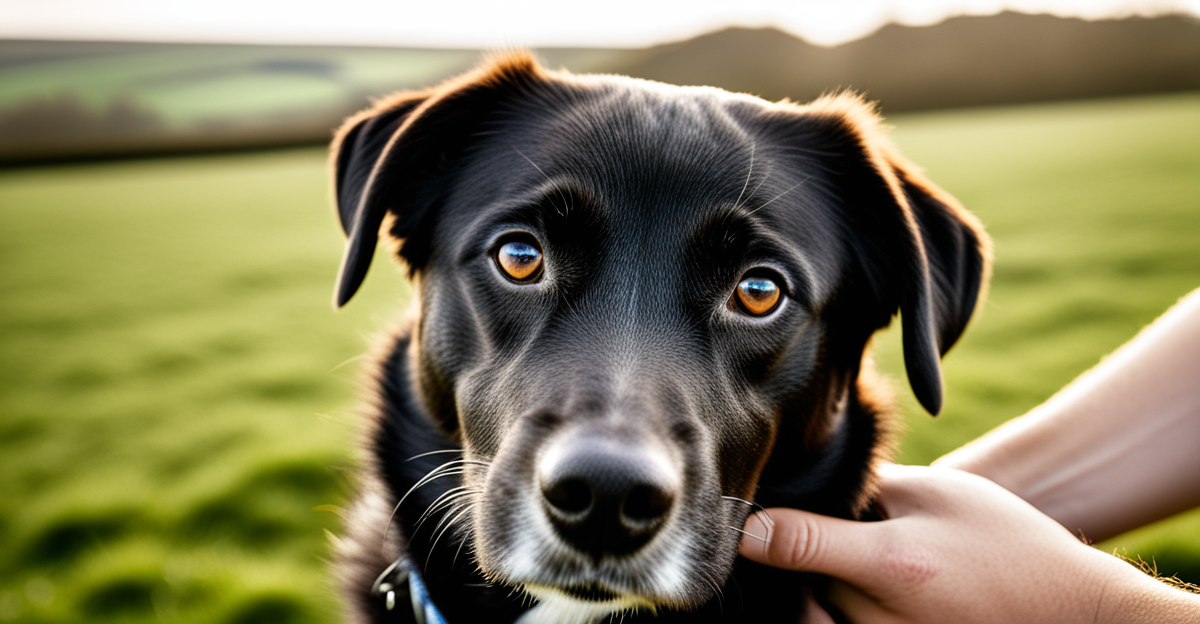Regional Differences in UK Pet Ownership
Pet ownership rates vary significantly across the UK, reflecting diverse regional lifestyles and demographics. UK pet ownership statistics reveal that England generally shows higher rates compared to Scotland, Wales, and Northern Ireland. For example, urban centers in England often report lower pet ownership due to housing constraints, while rural areas reflect higher pet ownership rates, influenced by greater access to outdoor spaces.
Scotland and Wales exhibit distinct regional pet ownership rates, with rural communities maintaining strong traditions of owning dogs and larger animals. Northern Ireland, meanwhile, shows unique trends with a slightly higher preference for cats over dogs, influenced by local cultural and housing patterns. These differences are essential to understanding how environment shapes the pet population.
Also read : How Can Pet Ownership Influence Social Dynamics in the UK?
Analyzing regional pet demographics, urban versus rural divides emerge clearly. Urban areas tend toward smaller pets like cats or small dog breeds, adaptable to apartments, whereas rural homes are more likely to house larger dog breeds or other livestock-oriented pets. These trends underscore the impact of lifestyle and space availability on pet ownership across the UK.
Regional Differences in UK Pet Ownership
Exploring UK pet ownership statistics reveals clear regional variations. England typically reports the highest pet ownership rates, with urban centres showing a strong preference for smaller pets like cats due to space constraints. In contrast, rural areas, especially in Scotland and Wales, lean toward higher dog ownership, benefiting from more outdoor space. Northern Ireland, while similar in overall ownership percentage to Wales, often shows distinct pet demographics influenced by local culture and housing.
This might interest you : Why Do Pets in the UK Have Unique Needs Compared to Those in Other Countries?
Regional pet ownership rates indicate that lifestyle and environmental factors play critical roles. For example, rural communities in Scotland often have higher rates of working dog ownership, linked to agricultural needs. Conversely, cities across England, such as London and Manchester, show a surge in pet popularity driven more by companionship interest than utilitarian roles.
The trend between urban and rural pet ownership is quite pronounced. Urban pet owners tend to favor pets requiring less outdoor space, such as cats or small mammals. Meanwhile, rural pet owners prefer breeds suitable for larger outdoor areas, reflecting pet demographics shaped by geography and lifestyle. This nuanced understanding of regional pet demographics helps tailor pet care solutions and services across the UK.
Regional Differences in UK Pet Ownership
Understanding UK pet ownership statistics requires dissecting regional variations shaped by socio-economic and geographic factors. England, for instance, exhibits higher overall pet ownership rates, driven by its larger population and diverse housing patterns. In contrast, Scotland’s regional pet ownership rates tend to reflect rural traditions, often favoring dogs and outdoor-compatible animals, aligning with its expansive landscapes.
Regional pet demographics reveal sharp contrasts in urban and rural settings. Urban dwellers in England and Wales favor smaller, more manageable pets like cats or small breeds of dogs due to limited living space. Conversely, rural communities across Scotland and Northern Ireland often keep larger dog breeds or multiple pets, facilitated by greater access to yards or countryside.
Socio-economic factors also influence these trends significantly. Higher-income households in urban areas might invest more in pet care, while in rural zones, pet ownership often relates more to lifestyle and practical roles, such as herding or companionship. These combined factors underpin the regional disparities seen in UK pet ownership statistics, demonstrating how environment and social context collaboratively shape pet ownership patterns.
Popular Pet Types by Region
Pet preferences across the UK vary distinctively by region, illustrating clear regional pet trends. According to most common pets UK data, dogs lead ownership in rural Scotland and Wales, aligning with traditions of outdoor activity and working roles. Conversely, cats dominate urban England, particularly in London and Manchester, where space constraints favor smaller, indoor-friendly pets.
The dog vs. cat ownership breakdowns regionally reveal subtle but important patterns. In Northern Ireland, cats slightly outnumber dogs, influenced by housing that often supports indoor and outdoor cat freedom. Scotland’s rural areas show a strong dog preference, especially breeds suited for countryside work, highlighting how local lifestyle shapes pet selection.
Unique or region-specific pets also emerge in certain areas. For instance, small mammals and exotic birds gain popularity in southern England’s urban zones, reflecting diverse tastes and easier maintenance requirements. Meanwhile, livestock or larger animals remain more common in rural Welsh and Scottish communities.
Understanding these pet preferences by region helps tailor pet care services and products. It also provides insights into community needs, supporting better welfare and ownership experiences across the UK.
Regional Differences in UK Pet Ownership
Examining UK pet ownership statistics reveals distinct patterns shaped by geography and lifestyle. England consistently reports the highest pet ownership rates, largely due to its dense and diverse population. In contrast, Scotland displays unique regional pet ownership rates influenced by its rural expanse, with more emphasis on dog ownership tied to outdoor activities and agricultural use. Wales shares similarities with Scotland but shows modest variation depending on community size.
Northern Ireland’s regional pet demographics highlight a notable preference for cats over dogs, influenced by local housing structures and cultural attitudes. Urban areas across all regions tend to favor smaller pets such as cats or small dog breeds, adapting to limited space and high-density living. Conversely, rural zones promote ownership of larger dogs, reflecting both lifestyle needs and available space.
These patterns underline the importance of housing type, access to outdoor areas, and regional culture. Understanding these regional pet ownership rates helps tailor pet care services and informs policy makers about community-specific needs related to pet welfare across the UK.
Regional Differences in UK Pet Ownership
UK pet ownership statistics consistently show variation between regions due to geographic and social influences. England leads with generally higher regional pet ownership rates, particularly in urban areas where smaller pets like cats prevail. Scotland and Wales reflect strong rural traditions, with dogs being the preferred choice, shaped by farming and outdoor lifestyles. Northern Ireland’s pet demographics reveal a notable cat preference, often attributed to housing types that accommodate both indoor and outdoor access for cats.
In urban settings across the UK, regional pet demographics shift toward animals better suited to limited space. Smaller breeds and indoor pets are common in English cities, demonstrating adaptive ownership patterns where outdoor access is minimal. In contrast, rural zones exhibit higher ownership of larger dogs or multiple pets, reflecting both lifestyle needs and environmental suitability.
These contrasting trends highlight how UK pet ownership statistics mirror regional culture, housing density, and available outdoor space. Understanding these regional pet ownership rates is vital for tailoring pet services, products, and welfare initiatives to specific community needs throughout the UK.
Regional Differences in UK Pet Ownership
UK pet ownership statistics illustrate distinct regional pet ownership rates shaped by geography and lifestyle. England reports the highest ownership levels, driven by a combination of population density and diverse housing. Urban English areas favor smaller pets like cats and small dog breeds, adapting to limited space. In contrast, Scotland’s rural communities show elevated dog ownership, linked to agricultural lifestyles and ample outdoor areas.
Wales shares similar rural trends, with a strong affinity for dogs suited to countryside living, while Northern Ireland stands out for higher cat ownership, reflecting local housing and cultural preferences. These differences in regional pet demographics emphasize how environment influences both the type and volume of pets kept.
Urban versus rural divides are also marked. Cities across the UK see concentrated populations of indoor-suitable pets, whereas rural areas support larger dogs and multiple pet ownership, reflecting outdoor access. This interplay of habitat, lifestyle, and culture defines the unique pet ownership landscape across UK regions, demonstrating how regional pet ownership rates are a direct outcome of both social context and physical environment.
Regional Differences in UK Pet Ownership
UK pet ownership statistics reveal marked contrasts between regions influenced by lifestyle, geography, and housing. England leads in overall ownership rates, partly due to its denser population and urban concentration, where smaller pets dominate. In Scotland and Wales, regional pet ownership rates favor dogs, particularly in rural zones where outdoor space supports larger breeds and practical roles.
Northern Ireland displays a relatively higher cat ownership rate, shaped by cultural norms and housing that accommodates indoor-outdoor lifestyles for felines. Differences between urban and rural environments are significant. Urban centres, especially in England, tend to show preference for cats and small dogs adaptable to confined spaces. Conversely, rural communities in Scotland, Wales, and Northern Ireland often have higher numbers of dogs, reflecting lifestyle needs such as companionship, security, or work.
Exploring regional pet demographics further, socio-economic and environmental variables shape trends. Cities with smaller dwellings limit pet size and number, while rural areas encourage ownership of multiple pets and larger breeds due to available space. These regional nuances in pet ownership highlight the interplay between environment and culture across the UK’s diverse communities.








